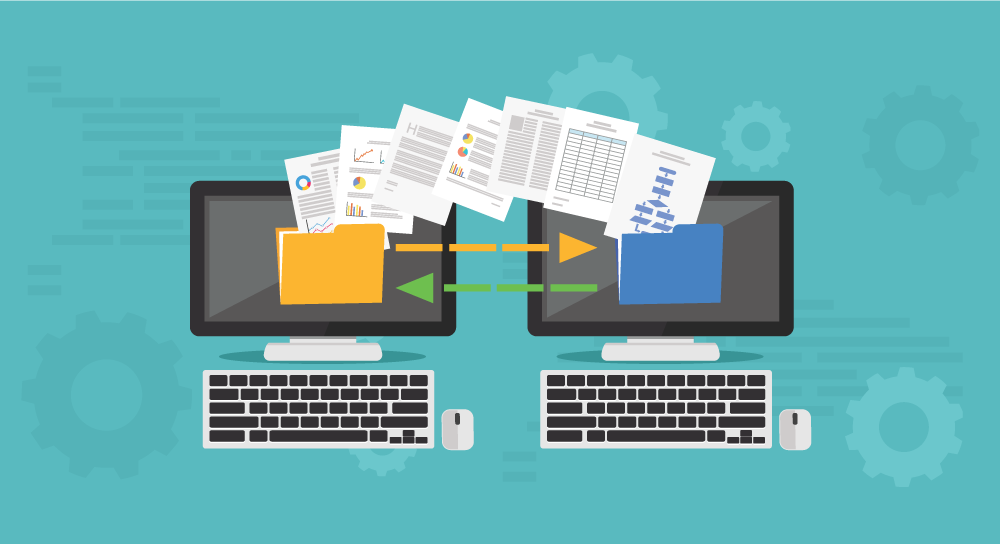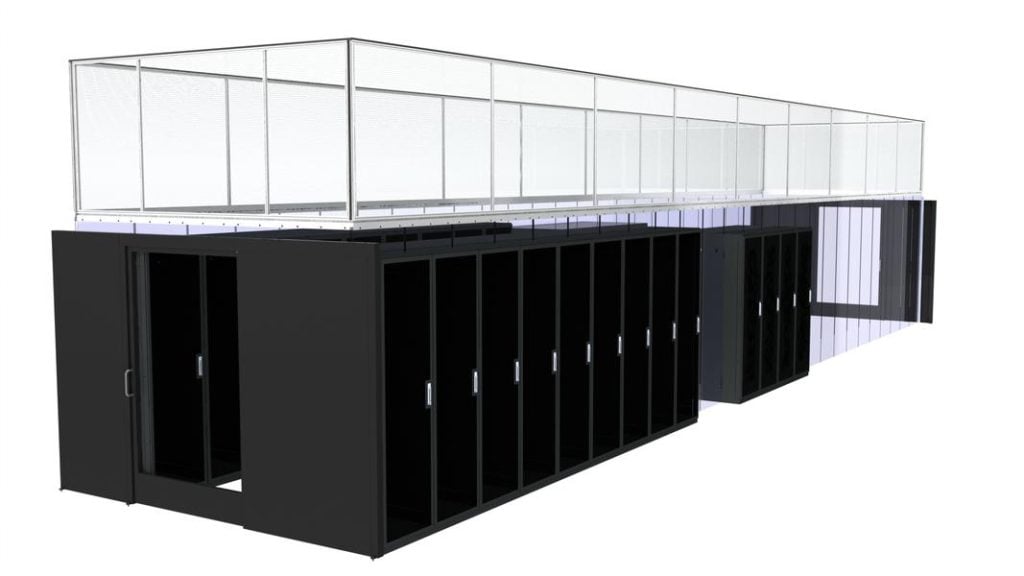Data centers are the backbone of our increasingly digital world. They power everything from streaming services to online shopping and cloud computing. As our reliance on data grows, so does the need for robust infrastructure to house and support these systems.
This is where commercial real estate plays a vital role. The evolution of data center trends in commercial real estate is reshaping the industry, driving innovation, and meeting the unique demands of a data-driven economy.
The need for urban data centers, sustainable solutions, and hybrid cloud infrastructure is pressing. To keep up, real estate developers are designing spaces optimized for data center functionality while addressing environmental concerns and emerging technologies like edge computing.
This article explores how commercial real estate is evolving to meet these demands, focusing on key trends and strategies.
Current Data Center Trends in Commercial Real Estate
Increasing Demand for Data Centers
The demand for data centers has surged due to the rapid growth of online activities, from e-commerce to remote work. Businesses require reliable, scalable facilities to store and manage their data. This increased demand is pushing commercial real estate developers to prioritize data center construction.
Key factors driving this demand include:
- The exponential growth of IoT devices.
- Rising popularity of streaming services.
- Businesses shifting to digital-first strategies.
Furthermore, the pandemic accelerated digital transformation across industries, making data centers indispensable. Companies are now investing heavily in cloud solutions, which in turn increases the demand for modern data center infrastructure.
This trend is expected to continue as more businesses adopt AI, machine learning, and big data analytics.
Urbanization and Edge Computing
Urbanization has led to a rise in edge computing facilities, which process data closer to the source to reduce latency. Urban data center development trends indicate a shift toward smaller, localized facilities that can handle the demands of densely populated areas.
Edge computing in commercial real estate provides:
- Faster data processing and reduced latency.
- Improved user experience for urban populations.
- Support for smart city technologies.
These facilities are essential for supporting the growing number of connected devices and real-time applications, such as autonomous vehicles and telemedicine. Urban data centers also reduce the strain on centralized facilities, making them a vital component of a distributed network.
Hybrid Cloud Adoption
The hybrid cloud model, which combines private and public cloud environments, is transforming real estate strategies. Businesses need spaces that can accommodate hybrid cloud infrastructure, leading to the development of flexible, adaptable properties.
Benefits of hybrid cloud impact on real estate include:
- Efficient use of resources.
- Enhanced data security and compliance.
- Increased scalability for growing businesses.
As hybrid cloud adoption grows, the design and construction of data centers are evolving to incorporate features like high-speed connectivity, robust security measures, and modularity. These changes ensure that data centers can support diverse workloads and adapt to future technological advancements.
The Role of a Data Center Operator: Powering the Digital World | Reboot Monkey
Sustainable Data Centers in Real Estate
Green Building Certifications for Data Centers
Sustainability is a critical focus in real estate development. Green building certifications like LEED (Leadership in Energy and Environmental Design) are becoming essential for data centers. These certifications promote energy efficiency, reduced water usage, and eco-friendly building materials.
For data center developers, achieving green certifications not only enhances the environmental performance of their facilities but also boosts their reputation among stakeholders. Customers increasingly prefer providers that demonstrate a commitment to sustainability.
Innovations in Power and Cooling
Power and cooling solutions in real estate are central to creating sustainable data centers. Advanced cooling systems, such as liquid cooling and air economizers, minimize energy consumption while maintaining optimal operating temperatures.
Key innovations include:
- Free cooling technologies leveraging natural air.
- Energy-efficient HVAC systems.
- Waste heat recovery systems.
Cooling technology is particularly important as servers generate significant heat during operation. By adopting innovative solutions, data centers can reduce energy costs and minimize their environmental impact. Developers are also exploring AI-driven cooling systems that optimize energy use based on real-time data.
Renewable Energy Integration
Renewable energy sources, such as solar and wind, are being integrated into data center operations. This reduces reliance on fossil fuels and aligns with global sustainability goals.
Advantages of renewable energy in data centers:
- Lower carbon footprint.
- Reduced operational costs over time.
- Alignment with corporate sustainability commitments.
Additionally, some developers are exploring energy storage solutions, such as battery systems, to ensure uninterrupted power supply during outages. These efforts not only enhance resilience but also support the transition to a greener energy grid.
Real Estate Strategies for Meeting Data Center Demands
Urban Data Center Development Trends
Urban areas are experiencing a surge in data center construction to meet local demand. These facilities are designed to handle high-density operations while maximizing space efficiency.
To address the challenges of limited urban space, developers are utilizing vertical designs and repurposing existing structures. For example, former industrial sites and office buildings are being converted into state-of-the-art data centers, optimizing land use and reducing construction time.
Zoning and Regulatory Challenges
Developers face zoning and regulatory challenges when building data centers in urban areas. Addressing these issues involves:
- Working with local governments to meet zoning requirements.
- Adhering to noise, power, and environmental regulations.
- Ensuring community support for new developments.
Navigating these challenges requires collaboration with policymakers and community leaders to balance economic growth with environmental and social considerations. Transparency and proactive communication are key to gaining approval for data center projects.
Partnerships Between Real Estate and Technology Firms
Collaborations between real estate developers and technology companies are shaping the future of data centers. These partnerships facilitate the design and construction of cutting-edge facilities tailored to technological needs.
Examples include:
- Joint ventures to share costs and expertise.
- Real estate firms leveraging tech firms’ insights to improve designs.
- Enhanced operational efficiency through shared resources.
Such partnerships not only streamline the development process but also ensure that data centers are equipped to handle the demands of next-generation technologies, such as 5G and AI-driven applications.
Rack and Stack Services: Harnessing the Full Potential of Rack and Stack Services | Reboot Monkey
Future-Proofing Data Center Trends in Commercial Real Estate
Scalability and Modular Design
Future-proofing data centers involves scalability and modular design. Modular data centers allow for incremental expansion, enabling businesses to scale operations without significant disruptions.
This approach is particularly beneficial for accommodating rapid technological advancements and fluctuating demand. By adopting modular designs, developers can reduce construction costs and accelerate deployment timelines.
Edge Computing and Distributed Networks
Edge computing and distributed networks are vital for future-ready data centers. They decentralize data processing, improving speed and reliability while reducing reliance on centralized systems.
As the adoption of IoT and real-time applications grows, edge computing will play a crucial role in enhancing network performance. Real estate developers must consider these trends when designing new facilities, ensuring that they can support distributed networks effectively.
Resilience and Disaster Recovery
Building resilient data centers is essential for minimizing downtime and ensuring business continuity. Disaster recovery strategies include:
- Redundant power and cooling systems.
- Robust physical security measures.
- Advanced data backup solutions.
In addition to these measures, developers are increasingly focusing on geographic diversity to mitigate risks associated with natural disasters. By strategically locating data centers in low-risk areas, companies can enhance their resilience and protect critical operations.
Emerging Technologies Driving Data Center Development
AI and Machine Learning Integration
Artificial intelligence (AI) and machine learning are revolutionizing data center operations. These technologies optimize energy usage, improve cooling efficiency, and enhance predictive maintenance.
AI-powered tools can monitor system performance, identify potential issues before they arise, and recommend solutions. This not only reduces downtime but also minimizes operational costs. Real estate developers are now designing data centers that can accommodate the computational requirements of AI-driven applications.
Blockchain and its Real Estate Impacts
Blockchain technology is influencing data center development by enhancing security and transparency. Blockchain-based solutions provide secure data storage and transaction processing, making them ideal for critical industries like finance and healthcare.
To meet these needs, data centers must prioritize:
- High-speed connectivity for blockchain networks.
- Enhanced power capacity to support intensive computational tasks.
- Robust security measures to prevent cyber threats.
Regional Trends in Data Center Growth
Data Center Hotspots Worldwide
Certain regions are emerging as global data center hubs due to favorable conditions. For example:
- North America: Boasts advanced infrastructure and a tech-savvy workforce.
- Europe: Offers strong renewable energy integration and regulatory support.
- Asia-Pacific: Leads in urban data center development trends, driven by population growth and digital transformation.
Government Incentives and Their Role
Governments worldwide are offering incentives to attract data center investments. These include tax breaks, subsidies for renewable energy use, and streamlined permitting processes. By capitalizing on these incentives, developers can reduce costs and accelerate project timelines.
Data Security and Commercial Real Estate Implications
Cybersecurity Considerations
Data centers must prioritize cybersecurity to protect sensitive information. This includes implementing advanced firewalls, encryption protocols, and real-time threat detection systems.
Physical Security Measures
In addition to digital protections, physical security is crucial. Strategies include:
- Secured perimeters with fencing and surveillance cameras.
- Biometric access controls.
- On-site security personnel.
Real estate developers must integrate these features into facility designs to ensure comprehensive security solutions.
The Economic Impact of Data Center Trends in Commercial Real Estate
As the demand for data storage and cloud services grows, data centers have become essential to the digital economy. These facilities store large amounts of information, supporting businesses and governments globally. The rise of data centers is not just transforming industries but also influencing real estate markets on both local and global scales.
1. Land Use and Property Values
The development of data centers often requires large plots of land, usually in suburban or rural areas with reliable power and cooling. This demand can change the local real estate landscape, impacting land values.
In some areas, land that was once zoned for residential or commercial use may be repurposed for data centers. This can reduce the amount of land available for other developments, pushing land values higher in nearby areas.
As land becomes scarce, developers may focus on building commercial spaces like offices, retail stores, and logistics hubs in surrounding regions.
2. Growth in Commercial Real Estate
Data centers are also having a major impact on commercial real estate. As businesses rely more on digital infrastructure and cloud computing, there’s a growing need for local data centers.
This is fueling demand for commercial properties in sectors like logistics, IT services, and telecommunications.
For real estate investors, this creates opportunities in markets close to data center hubs. Properties such as office spaces and industrial warehouses are being repurposed to support tech companies and service providers.
The demand for office spaces for employees and operations has led to increased investment in areas near data centers.
3. Impact on Residential Real Estate Markets
While the impact of data centers on residential real estate is less direct, it still plays an important role. The growth of data centers can bring tech-related job opportunities to local areas, attracting workers from various sectors.
This influx of employees can increase the demand for housing, especially near major data center hubs.
As more people move into these areas, there may be a rise in property values. Developers may focus on building high-end residential units or apartment complexes to meet the needs of the growing population. However, these areas may also face gentrification as wealthier tech workers move in.
On the downside, the large-scale operations of data centers can also lead to environmental concerns like noise, traffic, and disruptions to local ecosystems. These factors can affect how desirable the area is for residential living, influencing property values.
4. Transformation of Industrial Real Estate
Data centers are changing the landscape of industrial real estate. Traditionally, industrial properties were used for manufacturing, storage, and distribution. However, the need for specialized infrastructure in data centers is transforming this sector.
Buildings originally designed for manufacturing are now being repurposed to house data centers. These new developments require features like advanced electrical systems, cooling technologies, and high security.
As a result, industrial real estate developers are now focusing on spaces that meet the needs of tech industries, shifting how industrial properties are used and viewed.
5. Long-Term Trends and Opportunities
The expansion of data centers is likely to have lasting effects on real estate markets. As the need for data storage continues to grow, data centers will remain vital infrastructure, influencing both commercial and residential property trends.
In the long run, cities and regions close to data centers will likely see sustained property value growth. Developers and investors may seize opportunities by creating mixed-use developments that include residential, commercial, and industrial spaces to support the tech sector and its workers.
Additionally, areas with many data centers will likely see more investments in local infrastructure, like transportation and utilities, making these regions even more attractive for real estate development.
Conclusion
The evolution of data center trends in commercial real estate is reshaping the industry. From sustainable practices to edge computing and hybrid cloud adoption, developers are addressing the unique needs of a digital economy.
By focusing on innovation, collaboration, and future-proofing, commercial real estate is meeting the growing demands of data centers.
As technology continues to advance, the role of commercial real estate in supporting data center operations will become even more critical.
By staying ahead of emerging trends and embracing sustainable practices, developers can create facilities that drive long-term value and support the digital transformation of businesses worldwide.
To learn more about data center solutions or explore how our services can help you, contact us today.
FAQ
1. What are data centers in commercial real estate?
Data centers are specialized facilities designed to house computing and storage infrastructure. They are critical for managing and processing data in today’s digital economy.
2. Why is sustainability important in data center design?
Sustainability reduces environmental impact, lowers operational costs, and aligns with corporate social responsibility goals.
3. How does edge computing affect real estate development?
Edge computing drives the need for localized data centers in urban areas, promoting faster data processing and reduced latency.
4. What challenges do developers face in urban data center construction?
Developers face zoning restrictions, regulatory requirements, and community concerns while designing urban data centers.
5. How do hybrid clouds influence real estate?
Hybrid clouds require flexible and adaptable real estate solutions to support private and public cloud infrastructure.
6. What is modular design in data centers?
Modular design involves creating data centers with prefabricated units that can be added or removed based on demand. This approach enhances scalability and reduces construction time.
7. How can renewable energy benefit data centers?
Renewable energy reduces operational costs, lowers carbon emissions, and ensures a sustainable power supply for data center operations.









